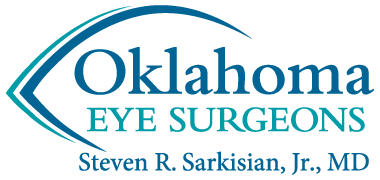Glaucoma
Glaucoma, a leading cause of blindness in the U.S., is a group of more than 30 diseases that affect the pressure inside the eye and damage the optic nerve. Often called the “silent thief” of sight, most forms of glaucoma do not display symptoms until the optic nerve is already severely damaged. Vision loss due to glaucoma is irreversible, but early diagnosis makes it possible to control the disease and prevent vision loss.
Dr. Sarkisian's devotion to surgical innovation has led him to become the first in the world to perform many breakthrough glaucoma procedures. His surgical experience and involvement in multiple FDA clinical trials for glaucoma treatment, including MIGS, has allowed him to play a significant role in the development of many of the latest advances in glaucoma technology.
What causes glaucoma?
Glaucoma occurs when the normal pressure inside the eyes (intraocular pressure, or IOP) increases because fluid, which usually flows in and out of the eye, is unable to drain. This buildup damages the optic nerve, the structure responsible for sending visual signals from your eyes to your brain.
What are the symptoms of glaucoma?
In most cases of chronic glaucoma, there are no symptoms before it has slowly progressed to a later stage. At that point, patients may notice loss of peripheral vision, though many do not. Since early warning signs chronic of glaucoma are rare, medical eye examinations every 1-2 years are crucial.
On the other hand, patients with acute angle closure whose IOP rises quickly may experience severe symptoms, such as:
- Blurred vision, especially at night
- Halos around lights
- Severe headaches or eye pain
- Nausea
If you experience any of these glaucoma symptoms, consult your eye doctor immediately.
Who is at risk for glaucoma?
Glaucoma generally affects adults over the age of 40, but studies show individuals at greater risk for glaucoma include those who:
- Are over the age of 60
- Have a family history of the disease, elevated intraocular pressure
- Are African-American over the age of 40
- Are Asian
- Are Hispanic over the age of 60
- Have diabetes or hypertension
- Are very nearsighted or farsighted
- Are steroid users
- Have had an eye injury
How is glaucoma diagnosed?
To help detect glaucoma in its early stages, Oklahoma Eye Surgeons operates within a sophisticated, state-of-the-art diagnostic facility. Your comprehensive glaucoma screening combines various non-invasive tests (computerized visual field testing, optic nerve imaging, blood flow measurement, and other advanced imaging techniques) to deliver the most accurate assessment.
Your screening may include the following:
- Tonometry: To measure internal eye pressure
- Visual Field: To check for vision loss in peripheral (side) vision
- Spectral Domain OCT: To precisely measure the retinal nerve fiber layer and monitor/detect optic nerve loss
- Optic Disc Photography: To document the severity of nerve damage and monitor changes
- Pachymetry: To measure cornea thickness, which can affect eye pressure readings
- Gonioscopy: To examine the eye’s drainage angle
How is glaucoma treated?
There are several treatment options for glaucoma, including everything from medicine (eye drops and topical/oral medications) to various types of eye surgery, described below:
- Laser Therapy: An outpatient procedure in which the surgeon uses a gentle laser to open clogged channels and release fluid build-up within in the eye
- Durysta: Sustained release glaucoma medication without eye drops.
- Minimally Invasive Glaucoma Surgery (MIGS): A less invasive treatment option designed to use microscopic equipment and tiny incisions to lower eye pressure and prevent progression for certain types of glaucoma
- Filtering Surgery: If medication does not control glaucoma and patient has undergone laser treatment, filtering surgery create a new passage for fluid drainage treatment
- Implant Surgery: A procedure to insert tiny drainage devices into the eye to prevent drainage openings created during filtering surgery from closing
What are the benefits of MIGS to treat glaucoma?
MIGS is a gentle glaucoma treatment option developed to lower eye pressure in patients with open-angle glaucoma. While there is no cure for glaucoma, MIGS can greatly decrease glaucoma medications, slow disease progression, and delay the need for other surgical intervention.
Several MIGS options include:
- XEN Gel Stent
- OMNI procedure
- Ab-Interno Canaloplasty
- iStent inject
- Trab-Ex
- Endoscopic CycloPhotocoagulation (ECP)
- Kahook Dual-Blade Treatment
MIGS may also be performed at the same time as cataract surgery, allowing many to achieve clearer vision and decrease IOP in one convenient procedure.
To find out if MIGS may be right for you, contact our office today.
Why trust your glaucoma care to Oklahoma Eye Surgeons?
Dr. Sarkisian’s devotion to surgical innovation for the treatment of glaucoma is the reason he has:
- Participated in numerous FDA clinical trials, particularly involving MIGS
- Been actively involved in the development of advanced technologies to diagnose and treat glaucoma
- Been the first nationally and internationally to perform many of these breakthrough procedures
- Instructed ophthalmologists around the world about new surgical techniques
- Served as director of the glaucoma fellowship at the Dean McGee Eye Institute
- Served as a clinical professor of Ophthalmology at the University of Oklahoma
- Served on the board and as a member or consultant of a variety of medical associations dedicated to glaucoma and cataract surgery
- Been consistently named one of “America’s Top Doctors/Ophthalmologists”
With the help of Dr. Partin, who specializes non-surgical glaucoma management, Dr. Sarkisian and our vision team track, participate in, and keep you informed of the most effective glaucoma breakthroughs. Request an appointment at Oklahoma Eye Surgeons.
